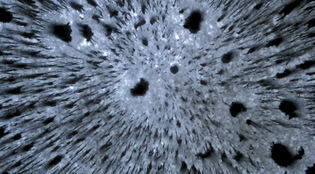 loading
loading
FindingsBonding Joshua CalabroView full imageAn exotic new species of coral? No, the strange form above is actually an engineering innovation—seen in microscopic close-up—that may help green the electronics industry: a strong, inexpensive solder to replace traditional lead-based solders. Lead is a potent neurotoxin. “Japan and the EU won’t allow electronic products that contain lead across their borders,” says mechanical engineering professor Ainissa Ramirez, who developed the new material, “and we’re moving away from its use in this country.” But the most popular lead-free alternative, a tin-silver alloy, is weaker and does not perform as well. So when Joshua Calabro ’07 was searching for a senior thesis project, Ramirez asked him to try mixing tiny particles of iron with tin and silver. The eventual result, described in Proceedings of the National Academy of Sciences, is a strong material that can be melted and then easily and cheaply channeled with a magnet to connect transistors, chips, and other components. “This is not your father’s solder,” says Ramirez. “Or your mother’s.”
The comment period has expired.
|
|